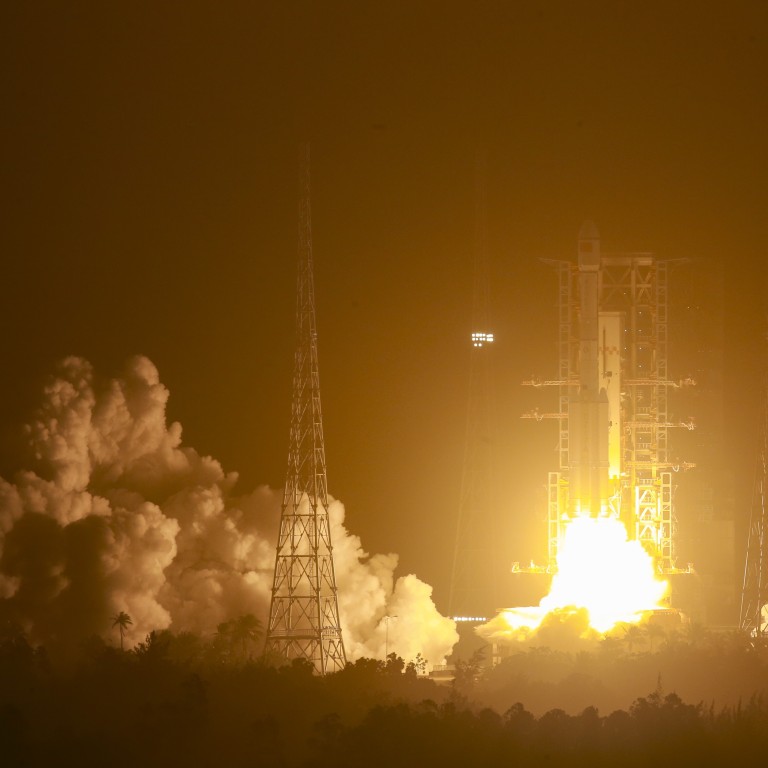
China comes back from 2020 rocket failure with Long March 7A and satellite payload launch
- Technology verification satellite Shiyan-9 was sent to geosynchronous orbit
- China plans to construct Tiangong Space Station through 11 launches carried out this year and next year
China’s next-generation Long March 7A blasted off from its Wenchang launch site in the southern province of Hainan early on Friday, one year after a failed attempt.
The launch sent a technology verification satellite, the Shiyan-9 developed by China Academy of Space Technology, into geosynchronous orbit, matching the Earth’s rotation.
China Aerospace Science and Technology Corporation (CASC), China’s main space contractor, confirmed the launch was successful on its official social media account 40 minutes later.
It came after a launch failure in March 2020. A loss of pressure occurred after first-stage separation, leading to engine malfunction. That was the first launch of the CZ-7A, or Long March 7A.
CASC plans to carry out between three and five CZ-7A launches a year by 2025.
The success on Friday was seen as a breakthrough for China because the Long March 7A can increase the payload weight to geosynchronous orbit from 5.5 tonnes to 7 tonnes, according to CASC.
The CZ-7A is a three-stage, medium-lift, liquid-fuel rocket. It is expected to play an important role in China’s high-orbit missions.
At 60 metres (197 feet) long and weighing 573 tonnes (632 short tons), the rocket is designed mainly for geostationary satellite delivery and can be launched from both the Wenchang site and the Xichang Satellite Launch Centre in Sichuan province.
China and Russia unveil plans for joint lunar space station
The CZ-7A is a variant of the CZ-7, which is designed mainly to launch cargo spacecraft to China’s planned Tiangong Space Station, according to an article by news portal 163.com.
With a payload capacity of over 13.5 tonnes, the CZ-7 can send more supplies to space at one time, helping future Chinese astronauts stay in the space station longer.
China will launch 11 missions this year and next year as it builds the space station. These will consist of three module launches, four Tianzhou cargo missions and four crewed flights.
It plans to launch the core module of the Tiangong this spring and aims to finish construction by the end of next year.
The Long March 7 made 12 breakthroughs and mastered 96 key technologies, and represented the state-of-art capabilities of China’s rocket research and development, the rocket research team said in 2017.
The country also conducted a secret test flight of what was believed to be a fixed-wing reusable spaceplane similar to the US Space Shuttle.

